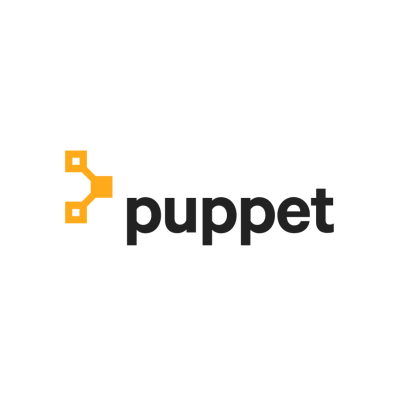7 Powerful DevOps Tools You Should Know in 2024
Have you ever wished that software development could be faster and focused on quality? Then DevOps may be the answer for your organization. DevOps is a set of practices that combine software development and IT operations to facilitate collaboration between teams.
The industry is constantly evolving, and new tools are being introduced daily. With so many options, it can take time to determine which ones are worth your time and money.

That’s why we’ve compiled a list of 7 powerful DevOps tools you should know this year. We’ll be taking a closer look at each of them and how they can help your business succeed.
1. Kubernetes

Kubernetes is an open-source container orchestration tool that makes it easy to deploy and manage applications in cloud environments. It enables developers to create complex application architectures with minimal effort, offering scalability and high availability for distributed systems.
With Kubernetes, organizations can benefit from automated deployments, streamlined operations, and faster innovation cycles.
Features
Kubernetes has an impressive array of features designed to make deploying and managing applications in a cloud environment easy. It offers container orchestration, allowing users to quickly define complex application architectures and deploy them. It also provides scalability, so users can easily add resources when needed and reduce costs when they’re not. Furthermore, Kubernetes helps ensure high availability for distributed systems and supports automated deployment of applications to cloud environments.
Pros
- Easy application scaling
- Automated deployments
- Self-healing capabilities
- Declarative infrastructure configuration
- Service discovery
- Powerful resource scheduling tools
- High availability for distributed systems
Cons
- Complex setup and configuration
- Limited authorization capabilities
- May require additional resources to support complex deployments
Benefits
The benefits of Kubernetes are evident in its fast delivery of better products with fewer errors. By adding Kubernetes to the DevOps toolkit, teams can optimize their processes, stay competitive and ensure their team is ready for the future.
Pricing
Kubernetes is an open-source project, so it’s free to use.
Now that you know all about Kubernetes, let’s take a look at another powerful tool.
2. Terraform

Terraform is a popular automation tool designed for building, changing, and versioning cloud infrastructure quickly and efficiently. It enables users to define their infrastructure as code, allowing them to deploy resources across multiple clouds without requiring manual configuration.
Features
Terraform provides a range of features to make the deployment process easier, such as declarative infrastructure configuration, version control, and resource management. It also offers end-to-end automation for all stages of the cloud provisioning process, from creation to destruction.
Pros
- Easy to get started, and no complicated setup is required
- Flexible and easy to use and supports a range of cloud services
- Support for multiple clouds, and deploy resources across multiple providers without manual configuration
- Automates end-to-end process – saves time on complex deployments
Cons
- Not suitable for small applications or projects due to complexity
- It Can be difficult to debug errors in complex configurations
Benefits
Terraform provides an efficient way to deploy and manage cloud infrastructure quickly and easily. It also helps reduce the risk of errors by automating the entire provisioning process from start to finish. Its tight integration with other DevOps tools makes it the ideal choice for teams looking to streamline their workflow.
Pricing
Terraform is free to use, though organizations looking for more complex features may need additional services or plugins from third-party vendors. For teams looking for even more support, the Team & Governance plan costs $20 per user per month.
Excited to know about the next DevOps tool on our list? Keep reading.
3. Super Monitoring

Super Monitoring is a comprehensive monitoring solution designed to help teams maximize their operational efficiency. It provides real-time insights into system performance and allows users to identify potential problems quickly and easily.
Super Monitoring simplifies the process of keeping your operations running smoothly with instant access to metrics, alerts, and analytics. Whether you’re looking to improve uptime or reduce costs, this powerful tool can help you get there faster.
Features
- Real-time metrics and analytics for quick system analysis
- Flexible alerts for proactive issue detection
- Powerful reporting capabilities for better decision making
- Integration with third-party tools for enhanced functionality
Pros
- Easy to use with minimal setup time required
- Comprehensive monitoring features provide real-time insights into system performance
- Customize your monitoring experience to fit the precise needs of any user
Cons
- Setup can be complex if you’re unfamiliar with all of the features
Benefits
- Optimize system performance and minimize downtime
- Increase operational efficiency and reduce costs
- Improve collaboration between teams by sharing data in an easy-to-access format
- Proactively detect and fix issues before they become a problem
Pricing
- Ansible is designed to be easily managed by anyone in the team regardless of technical expertise or experience
- Ansible streamlines workflow by automating routine tasks like server configuration, application deployment, and cloud provisioning
- Flexibility is increased with integration of third-party tools, allowing users to manage multiple systems from one platform
- Ansible can be challenging to learn for novice users, creating a learning curve
- Ansible’s community support may not be as vast as that of other DevOps tools
- Ansible reduces complexity by simplifying complex processes into easy-to-understand playbooks
- Ansible saves time by automating routine tasks, creating a more streamlined workflow
- Ansible enables teams to respond to real-time data quickly, allowing them to increase agility and make changes rapidly
- Improved scalability makes it easy to increase or decrease workloads depending on user needs
- Ansible facilitates enhanced collaboration between team members from any location in real-time
- Automated builds and deployments
- Support for multiple languages
- Continuous integration capabilities
- Easy-to-use platform
- Streamlines processes and automates tasks
- Enables teams to build, test and deploy code with accuracy quickly
- Supports multiple languages for accelerated development cycles
- It can be challenging to configure if you don’t have experience with DevOps tools
- Accelerated delivery of applications and services in production environments
- Improved quality of software applications through automated testing and continuous deployment Reduced complexity by simplifying complex operations
- Model-driven infrastructure configuration
- Ability to integrate with other DevOps tools
- Automated provisioning
- Improved reliability of deployments
- Reduced manual intervention
- Easily scalable
- Requires a steep learning curve to take advantage of the features available fully
- Enables teams to quickly and easily configure systems
- Minimizes errors by ensuring uniformity and reliability of deployments
- Integrates with other DevOps tools for automated provisioning, simplifying complex operations
- Provides users with greater control over their systems
- Automates configuration management, orchestration, and deployment
- Integrates with popular cloud systems such as AWS, Microsoft Azure, and Google Cloud Platform
- Easily configure systems with its model-driven approach
- Streamlines operations through automation
- Minimizes errors associated with manual configurations
- Enables users to define their entire infrastructure as code
- Steep learning curve to fully take advantage of the features available
- Potentially challenging to integrate with legacy systems
- Allows teams to deploy applications without manual intervention quickly
- Ensures uniformity and reliability of deployments
- Reduces errors significantly compared to manual configurations
- Offers a central platform for configuration, orchestration, and automation
- Investing in reliable cybersecurity software is essential for any Dream DevOps team. It will protect data and systems from malicious actors while allowing legitimate users access to resources.
- Considering DevOps-as-a-Service can help streamline the development process, reduce manual labor and minimize errors.
- Take the time to research your options for finding the best tool for your company’s specific needs, budget and security concerns.
Super Monitoring offers a free trial starting at just $5.99 per month.
4. Ansible

Ansible is a powerful automation tool that helps teams manage and deploy applications quickly, efficiently, and with minimal effort. It automates routine tasks like server configuration, application deployment, cloud provisioning, ad-hoc task execution, and more.
It is designed to be easily managed by anyone on the team, regardless of technical expertise or experience. Ansible simplifies complex processes into easy-to-understand playbooks. Its integration with third-party tools gives users greater flexibility when managing multiple systems from one central platform.
Features
Ansible is an effective automation tool that offers many benefits to DevOps teams. It simplifies complex processes into easy-to-understand playbooks, making it ideal for anyone in the team, regardless of technical expertise or experience. Its integration with third-party tools such as GitHub, Jenkins, and Docker gives users greater flexibility and control over their operations.
Pros
Cons
Benefits
Pricing
Ansible is free.
5. Jenkins

Jenkins is a one-stop solution for DevOps teams looking to streamline operations and automate complex tasks. It provides an easy-to-use platform for continuous integration, allowing developers to build, test and deploy code quickly and accurately.
Jenkins enables teams to quickly accelerate their development cycles while ensuring the highest quality of applications. Additionally, it integrates with other DevOps tools, such as Ansible and GitHub, for automated deployment, simplifying complex operations and providing users with greater control over their systems.
Features
Pros
Cons
Benefits
Pricing
Jenkins is an open-source tool and is available for free.
6. ProgressChef

ProgressChef is a powerful automation tool designed to enable DevOps teams to quickly and easily configure systems. It provides a comprehensive platform for IT automation, allowing users to define their entire infrastructure as code.
ProgressChef’s model-driven approach helps ensure uniformity and reliability of deployments, assisting teams to minimize manual intervention and maximize efficiency.
Features
Pros
Cons
Benefits
Pricing
ProgressChef is available in three editions – Open Source, Automate, and Enterprise. The open-source version is free to use but the average personal chef cost is $30-40 per hour, but it does vary depending on your location.
7. Puppet

Puppet is one of the most popular automation tools in the DevOps space. It can help your team save time and accelerate development cycles. It enables users to define their entire infrastructure as code. It provides an integrated platform that allows teams to manage configuration, orchestration easily, and automation in one place.
Additionally, it integrates with popular cloud systems such as AWS, Microsoft Azure, and Google Cloud Platform, helping teams quickly deploy applications without manual intervention.
Features
Pros
Cons
Benefits
Pricing
Puppet offers several pricing options ranging from individual users to enterprise-level businesses. The exact price will depend on the package and features you choose. To learn more about pricing and packages available, contact sales.
Bonus Tips for Your Dream DevOps Team
Having the right tools is just one part of building a successful DevOps team. Other factors can help ensure you have an efficient and productive workflow.
Here are some bonus tips for creating your dream DevOps team:
Embrace Open-Source Software as Much as Possible
Embracing open-source software as much as possible is one of the best ways to ensure that your Dream DevOps team has access to the most advanced and up-to-date tools. Open-source solutions often offer cost savings compared to commercial options.
Open-source tools give access to libraries, resources, and other knowledge that can help speed up development and deployment times without sacrificing quality or security.
Significance and Benefits of Embracing Open-Source Software
Open-source software provides a wide range of benefits, making it an excellent choice for DevOps teams. By leveraging existing open-source resources, companies can save time and money during development and access the latest trends in technology.
Take advantage of the benefits of open-source software for your Dream DevOps team today – start building a better future for your business.
Invest In Cybersecurity Software
Investing in cybersecurity software is another essential tip for building an effective Dream DevOps team. Cybersecurity threats are on the rise and can cause severe and costly damage to businesses if they are not dealt with promptly.
Benefits of Investing in Cybersecurity Software
Investing in cybersecurity software is essential to building a successful Dream DevOps team. Investing in cybersecurity software can help detect any suspicious activity and alert the team to respond quickly. This will ensure that potential threats are identified early and dealt with appropriately.
For more information on the most potent cybersecurity software tools, check out our article on the 7 Most Powerful Cybersecurity Software Tools.
Taking the proper steps now will protect your data and systems, so start building a better future for your business today! Now let’s move on to the next bonus tip that is considering DevOps-As-A-Service.
Consider DevOps-As-A-Service
Considering DevOps-as-a-Service is another crucial step for any Dream DevOps team. In this model, the development and operations teams collaborate to create an automated workflow that can quickly identify and address problems in the system. This helps speed up the delivery process and reduce manual labor and errors.
Additionally, implementing DevOps-as-a-Service allows teams to focus more on innovation and deliver better products to customers in shorter amounts of time. Investing in the right DevOps platform is essential for any business looking to stay competitive, so take the time to research your options and make an informed decision.
Learn more about DevOps-as-a-Service from this comprehensive article by JustAfterMidnight.
Benefits of Considering DevOps-as-a-Service
Investing in DevOps-as-a-Service can bring numerous benefits to your business. It enables seamless communication and collaboration between development and operations teams, resulting in faster delivery and better quality.
With DevOps-as-a-Service, you can deploy code more frequently and at a faster rate, which leads to quicker time-to-market and improved customer satisfaction. This model can also help reduce errors and improve overall quality through the automation and streamlining of processes.
Conclusion
The following are some of the key takeaways from this article:
Share this blog with friends and colleagues to help them ensure their Dream DevOps team is ready for the future!
About the Author

Liza Seferi is an inquisitive and highly driven storyteller with experience in developing compelling content, including feature articles, reviews, and pieces for content marketing. Her aim is to write stories that captivate audience and generate interest in topics.






